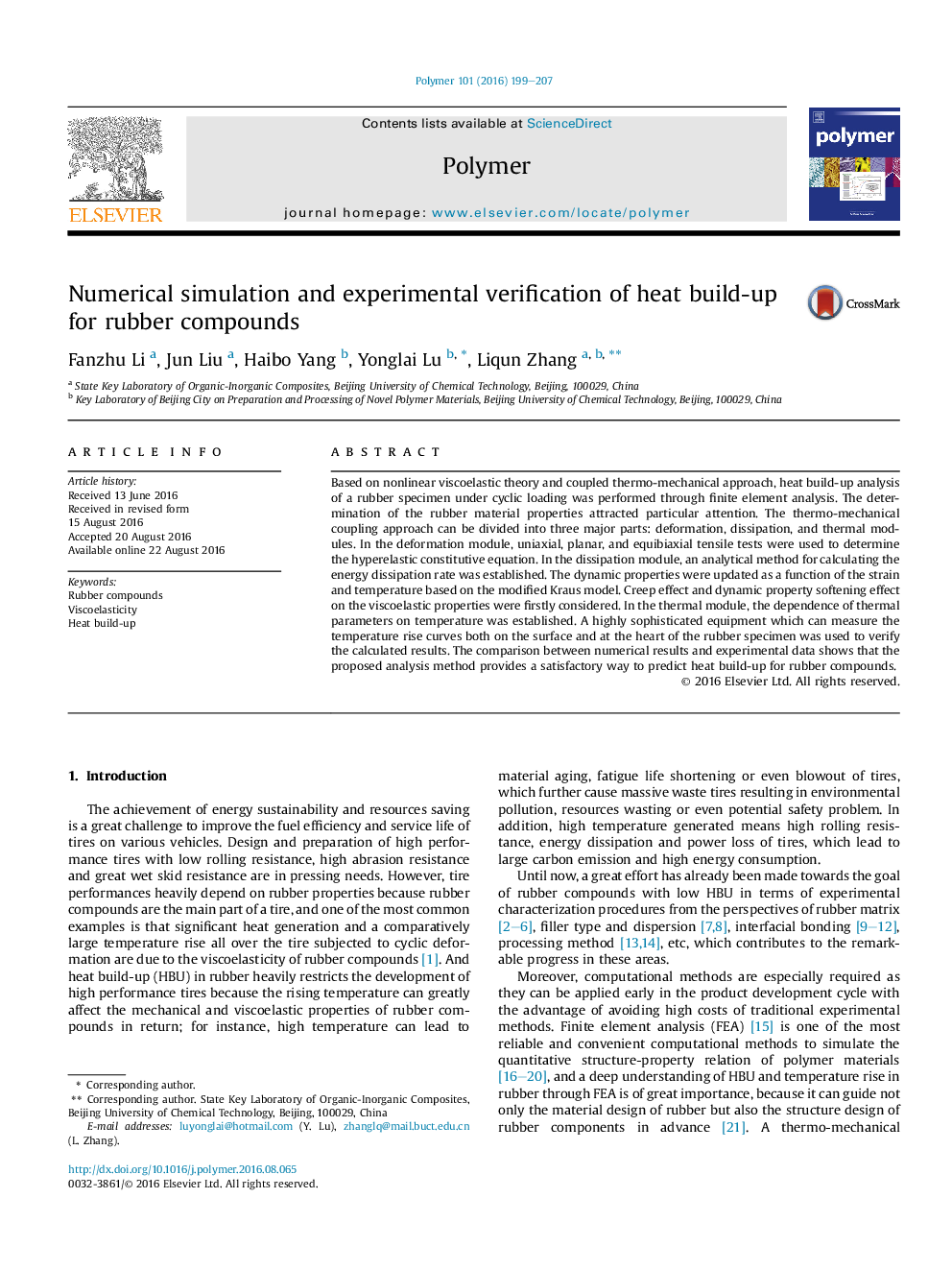| Article ID | Journal | Published Year | Pages | File Type |
|---|---|---|---|---|
| 5178904 | Polymer | 2016 | 9 Pages |
â¢Heat build-up analysis for rubber compounds was performed.â¢Thermo-mechanical coupling approach and nonlinear viscoelastic theory were used.â¢Creep effect on heat build-up for rubber compounds was firstly considered.â¢Dynamic property softening effect on heat build-up was firstly considered.â¢A highly sophisticated equipment was used to verify calculated temperature results.
Based on nonlinear viscoelastic theory and coupled thermo-mechanical approach, heat build-up analysis of a rubber specimen under cyclic loading was performed through finite element analysis. The determination of the rubber material properties attracted particular attention. The thermo-mechanical coupling approach can be divided into three major parts: deformation, dissipation, and thermal modules. In the deformation module, uniaxial, planar, and equibiaxial tensile tests were used to determine the hyperelastic constitutive equation. In the dissipation module, an analytical method for calculating the energy dissipation rate was established. The dynamic properties were updated as a function of the strain and temperature based on the modified Kraus model. Creep effect and dynamic property softening effect on the viscoelastic properties were firstly considered. In the thermal module, the dependence of thermal parameters on temperature was established. A highly sophisticated equipment which can measure the temperature rise curves both on the surface and at the heart of the rubber specimen was used to verify the calculated results. The comparison between numerical results and experimental data shows that the proposed analysis method provides a satisfactory way to predict heat build-up for rubber compounds.
Graphical abstractDownload high-res image (283KB)Download full-size image
